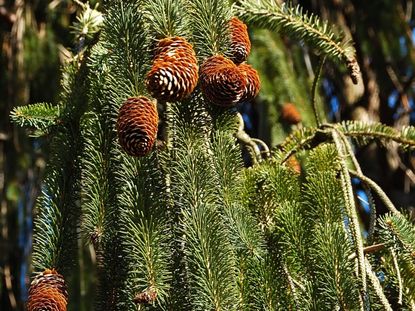Zone 5 Weeping Trees – Growing Weeping Trees In Zone 5


Weeping ornamental trees add a dramatic, graceful look to landscape beds. They are available as flowering deciduous trees, nonflowering deciduous trees, and even evergreens. Usually used as specimen trees in the garden, different types of weeping trees can be placed in different beds to add variety, while also carrying out shape consistency throughout the landscape. Nearly every hardiness zone has a few choices of weeping trees. This article will discuss growing weeping trees in zone 5.
About Weeping Ornamental Trees
Most weeping trees are grafted trees. On weeping ornamental trees, the graft union is usually at the top of the trunk, just below the tree canopy. A benefit of having this graft union where it is on weeping trees is that the weeping branches generally hide it. A drawback is that in the winter the graft union doesn’t have the protection and insulation of snow or mulch at the ground level.
In northern areas of zone 5, you may have to wrap the graft union of young weeping trees with bubble wrap or burlap for winter protection. Suckers that develop at any time below the graft union should be removed because they will be of the rootstock and not the weeping tree. Letting them grow can eventually lead to the death of the top part of the tree and reversion to the rootstock.
Weeping Trees for Zone 5 Gardens
Below are lists of the different types of weeping trees for zone 5:
Flowering Deciduous Weeping Trees
- Japanese Snowbell ‘Fragrant Fountain' (Styrax japonicas)
- Walker's Weeping Peashrub (Caragana arborescens)
- Weeping Mulberry (Morus alba)
- Lavender Twist Redbud (Cercis canadensis ‘Lavender Twist')
- Weeping Flowering Cherry (Prunus subhirta)
- Snow Fountain Cherry (Prunus x snofozam)
- Pink Snow Showers Cherry (Prunus x pisnshzam)
- Weeping Pink Infusion Cherry (Prunus x wepinzam)
- Double Weeping Higan Cherry (Prunus subhirtella ‘Pendula Plena Rosea’)
- Louisa Crabapple (Malus ‘Louisa')
- First Editions Ruby Tears Crabapple (Malus ‘Bailears’)
- Royal Beauty Crabapple (Malus ‘Royal Beauty')
- Red Jade Crabapple (Malus ‘Red Jade')
Nonflowering Deciduous Weeping Trees
- Crimson Queen Japanese Maple (Acer palmatum ‘Crimson Queen’)
- Ryusen Japanese Maple (Acer palmatum ‘Ryusen’)
- Tamukeyama Japanese Maple (Acer palmatum ‘Tamukeyamu’)
- Kilmarnock Willow (Salix caprea)
- Niobe Weeping Willow (Salix alba ‘Tristis')
- Twisty Baby Locust (Robinia pseudocacia)
Weeping Evergreen Trees
- Weeping White Pine (Pinus strobus 'Pendula')
- Weeping Norway Spruce (Picea abies ‘Pendula')
- Pendula Nootka Alaska Cedar (Chamaecyparis nootkatensis)
- Sargent’s Weeping Hemlock (Tsuga canadensis ‘Sargentii’)
Gardening tips, videos, info and more delivered right to your inbox!
Sign up for the Gardening Know How newsletter today and receive a free download of our most popular eBook "How to Grow Delicious Tomatoes."